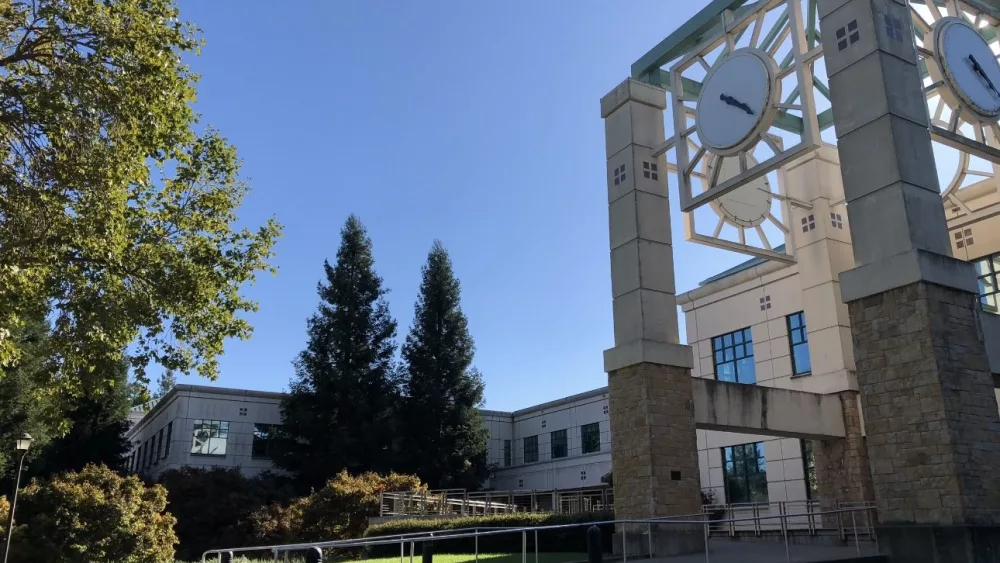Is it really a shocker that people would choose zero income tax over thirteen percent?
Welcome to the February Health & Medicine issue of NorthBay biz magazine. The beginning of another new year seems to infuse the spirit of optimism into even the “Grinchiest” among us and good intentions rule the day. Everyone seems to be engaged in the annual ritual of making resolutions intended to improve their life over the coming months. Not to be left out, this year I’m making a resolution I know will be difficult to keep, but I’m determined to finally quit smoking. So, in the coming weeks, if you see a grouchy looking guy about 30 pounds overweight walking down the street don’t hesitate to cross to the other side. I’ll just take resentful solace in your obvious avoidance that my resolution is still in tact.
As we welcome in another new year, it’s worth noting that as the calendar changes 900 new laws take effect in California. In the legislature’s never-ending quest to control all facets of everyday life, they too often actually impede business growth and slow the local economy with the plethora of new laws they enact each year. In just the past three years, Sacramento legislators have written 2,657 new laws.
Instead of spending so much time creating new laws, how about our prolific lawmakers concentrate on big picture solutions that boost the economy so we can afford to fix our crumbling infrastructure? How about addressing the lack of adequate housing and building a business- friendly environment in the state that is conducive to job creation, instead of spending all their time mandating who can use which bathroom?
The stifling effect of big government can’t be overstated. Here’s an eye-catching stat from the 2016 edition of Rich States, Poor States: nearly every blue state the Democrats won in the recent presidential election lost a significant portion of its population base to domestic migration over the past 12 years. In California and New York alone, nearly 2 million more people left than entered those states over this timespan.
The book refers to this group as the loser states and all share these same traits: They’re progressive, high-tax, heavily regulated states that deliver high welfare benefits and are leaders in hyper-environmental policy. These policies might make for good sound bytes, but their effects have largely driven the middle classes to leave these states in droves.
On the other side are the winners in this wave of domestic migration. Texas and Florida are the leading red state gainers adding nearly 1 million new residents each over the same dozen years. This is one of the greatest waves of internal migration in the country’s history, fueled by folks seeking lower tax, small government solutions. And, as you might expect, given this trend, job creation was far greater in the red states carried by Trump than the blue states carried by Clinton.
Comparing the two biggest red states, Texas and Florida, with the two big blue states, California and New York, it’s easier to understand people leaving crowded and dismal New York for a more pleasing destination, but folks opting to leave California’s superb physical “climes” shows something is very wrong in this progressive haven.
What specifically is wrong? Here’s a passage from Rich States, Poor States that provides an answer. “What doesn’t make California and New York paradise is the high cost of living—thanks to expensive environmental regulations, forced union policies and income tax rates that are the highest in the nation, at 13 percent or more. Florida and Texas are right-to-work states with no income tax. Is it really a shocker that people would choose zero income tax over 13 percent? Even when it comes to income inequality, blue states fare worse than red states. According to a 2016 report by the Economic Policy Institute, among the states with the largest gaps between rich and poor are progressive icons New York, Connecticut, Massachusetts and California. Sure Boston, Manhattan and Silicon Valley are booming as the rich prosper. But outside these areas are deep pockets of poverty and wage stagnation.”
“The lesson to be learned from the experimentation of the states is that the progressive tax and spend agenda leads to much slower growth and benefits the rich and politically well-connected at the expense of everyone else. Trump is now promising that on a national scale, he will cut taxes, deregulate and cut wasteful government spending. In the presidential debates, Clinton disparaged this agenda as trumped-up, trickle-down economics that has never worked. Yet prospering red states such as Florida, Texas, Tennessee and many others continue to steal jobs and growth from blue-state America.”
You decide who’s right.
That’s it for now. Enjoy this month’s magazine.



